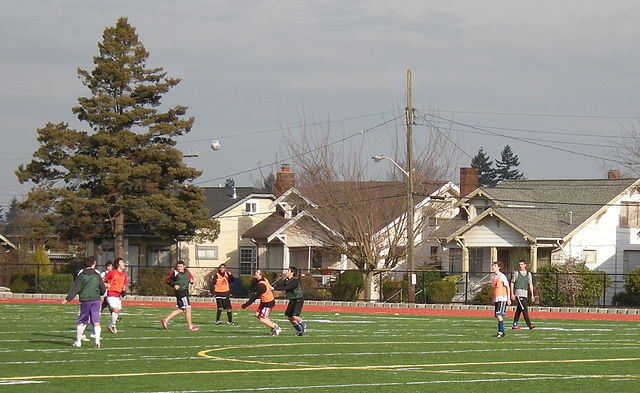
BY SASHA DJURASOVIC
A large number of high school athletes have been taking a gap year before applying to college.
This phenomenon, commonly known as “reclassification,” refers to aspiring college athletes taking a year off before college to develop athletically and obtain a better chance of getting into college. This is particularly true for student athletes targeting high performing athletic and academic schools.
“Reclassifying greatly helped my ability to be recruited. I felt more mature physically and mentally than the other kids in my grade,” Cameron Polemeni-Hegarty, a current football player at the University of Pennsylvania, said.
Reclassification is a complicated process and decision, but it can help aspiring college athletes achieve their goals.
Joe Chapman, coach and director of Chapman Basketball Academy, explained that students can choose to reclassify at many points of their high school career. While high school is the most common time to reclassify, Chapman noted that some reclassify as early as middle school.
Reclassifying can be integral for athletes that are trying to get an offer from a Division I school.
Polemeni-Hegarty explained that there is a “large jump” in required athletic skill from Division III to Division I. Having another year of training can give potential athletes an edge on getting Division I offers. Polemeni-Hegarty elaborated that using his extra year to train with an athletic training staff maximized his athletic performance for college. Today, reclassification is common in the world of Division I recruitment.
“At recruitment camps, most people have reclassified. I am seventeen and young for my grade, but most people there are eighteen to nineteen,” Chris Djurasovic, a high school senior and Division I and III camp athlete, said.
Polemeni-Hegarty echoed Djurasovic’s observation.
“Most kids in my recruiting class were born in the same year as me or earlier, I found that even some of the kids that did not reclassify were old for their grade,” Polemeni-Hegarty said.
Elizabeth Rater, a Division I soccer player at Southeastern Missouri State, also noted the wide range of ages on college teams.
Reclassification has, especially during the pandemic, given some athletes the upper hand in competitive recruiting pools.
Chapman noted that some colleges have “allowed [athletes] a COVID year giving them an extra year of eligibility.”
He explained that this year was given to make up for the partial or total loss of the season affected by the pandemic. Those athletes have a chance to transfer from their original school in order to play their sport elsewhere for one year.
Djurasovic noted that given the high number of college transfers, athletes this year face even more challenges than normal in recruitment.
High school players have a more difficult time catching the attention of coaches, who may have instead set their sights on seasoned college level players transferring from other universities. By reclassifying, high school students improve their chances when competing with transferring college recruits.
But, this decision is often complicated by financial considerations.
The most conventional way to reclassify is by taking an extra year at a private school. According to Djurasovic, this is often unviable for many families.
Another factor that holds students back from reclassification is separation from peers.
“I don’t want to be a year behind everyone after college,” Djurasovic said.
Rater, who committed to Southeastern Missouri State during her junior year of high school, also chose not to reclassify.
“I found the place that I felt I could grow the most academically and athletically,” Rater said.
While growing exponentially in popularity, many agree that reclassification is a choice and not a requirement for Division I success.
Less than 2% of all highschool athletes end up playing at a Division I school.






